Low back (lumbar) pain is a very common problem: about 40% of people have LBP at some point in their lives. Symptoms usually begin between 20 and 40 years of age, with men and women equally affected
In most cases the pain isn't caused by anything serious and usually improves within a few weeks or months and it won’t be necessary to see a doctor or other healthcare professional. However, you should consider making an appointment if the pain:
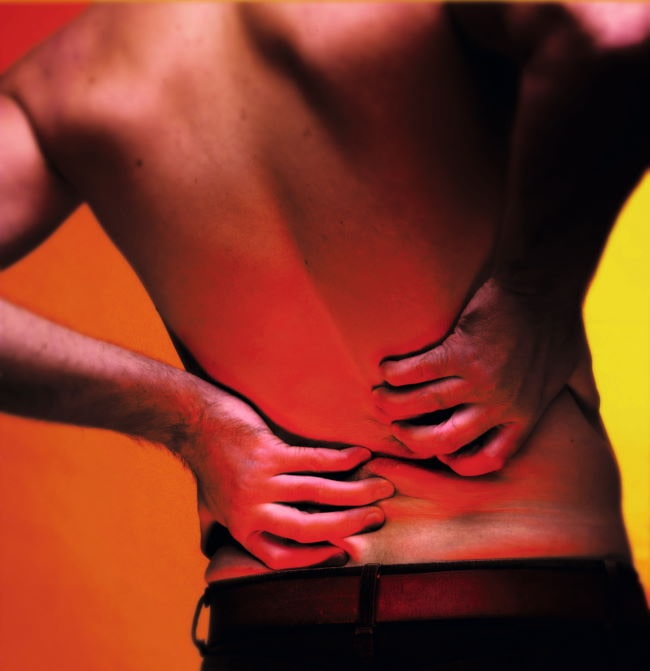
If you make an appointment for back pain you may see your GP or a physiotherapist who is specialised in spinal problems. Occasionally you may be referred to be seen by a hospital specialist.
However, in a few rare cases, new symptoms may indicate a more serious problem which needs urgent treatment. You should go to A&E or call 999 if you develop:
Symptoms related to the lumber spine tend to occur in three patterns:
Back pain alone – symptoms are not generally caused by anything serious. Sometimes the pain may result from an injury, such as a sprain or strain, but it’s often not possible to identify the cause (non-specific back pain). In these cases, wear and tear within the spine may cause pain which is then worsened by muscle spasm. Sometimes this occurs as one-off attack which quickly settles, but in other cases symptoms may come and go over many years
Sciatica – is usually caused by a bulging disc pressing on a nerve root and causing a combination of back pain and one-sided leg pain (sciatica). On average, this tends to occur in a younger age group. Symptoms are often associated with a severe bout of pain which tends to settle down over a period of 4 to 6 weeks, even without treatment, but can sometimes last longer.
Neurogenic claudication - tends to occur in older patients and classically involves pain in both legs when walking which eases off with rest. This is usually caused by enlarged spinal joints encroaching on the nerves. Walking in a slightly bent posture can ease the symptoms and sufferers sometimes say that the pain is easier if they’re pushing a supermarket trolley.
Advice on treatment should be sought from healthcare professionals, but in general it involves:
Exercise and postural management – try to keep active as this strengthens the back muscles to provide support for the spine itself. The NHS website provides a useful guide on how to do this: ‘Lower back pain exercises’ www.nhs.uk/live-well/exercise/lower-back-pain-exercises/ . Other activities such as walking, swimming, yoga, Pilates or group exercise classes can help – depending on what suits you.
Manual Therapy – is usually carried out by physiotherapists, chiropractors or osteopaths and may involve massage and manipulation of the spine.
Weight Loss – obviously the spine will be put under more stress if it has to carry more weight. So, for some, losing weight can be very helpful.
Pain-killing Medication – can help take the edge off symptoms, while the body heals itself. Examples include anti-inflammatory painkillers, like ibuprofen (always check with a pharmacist if you're not sure whether a particular medication is safe for you).
Psychological Management – severe on-going pain can be extremely demoralising but low mood can in itself worsen the perception of the pain so a vicious circle is set up. Although it can be difficult, it helps to stay optimistic and remember that the pain should get better. If you're struggling to cope with the pain, psychological support, such as cognitive behavioural therapy (CBT), might help.
Percutaneous Spinal Procedures - Pain Specialists are able to carry out treatments via a needle inserted through the skin to block nerves within the spine. One procedure called ‘radiofrequency denervation’ may sometimes be used if your pain is thought to originate from the joints in your spine. Radio waves are sent through the needles to heat the nerves, which stops them from sending pain signals.
Surgery – is most likely to be of benefit when pain in the legs is significant i.e. sciatica or neurogenic claudication. Leg pain is ‘referred’ from a trapped nerve and hence surgery to decompress the nerve may well help. For sciatica the main operation is a ‘Microdiscectomy’ while in neurogenic claudication a ‘Laminectomy’ or ‘Undercutting Facetectomy’ is more common. These operations can have an instant effect, but this cannot be guaranteed.
We sell several items which can help by alleviating the pain itself. Each person is different and it is difficult to predict what will help you – it may be a question of trying them out and seeing what works best.
It should be stressed that none of these treatments is a cure – they are simply there to help cope with the pain while the body heals itself or a more radical treatment is undertaken.
Good posture is important in both preventing and treating symptoms.
When you sit on a Bambach Saddle Seat, your spine stays in a healthy ‘S’ shape. Visit the Bambach UK website to read more about the:
8 reasons why the Bambach Saddle Seat can help back pain:
As described above, it is well recognised that walking in a slightly stooped posture can help ease the pain of neurogenic claudication and indeed the improvement of symptoms when pushing a supermarket trolley is regarded as strong supportive evidence for the diagnosis. Similarly, though less widely recognised, using a rollator may help the symptoms. [Lumbar spinal stenosis: Can positional therapy alleviate pain? J Fam Pract. 2008 - See Useful Links (below) for more details].
If you’re not sure, come to our showroom and have a go. We’ve got plenty of rollators and plenty of space so just try walking around with one and see if it helps your symptoms.
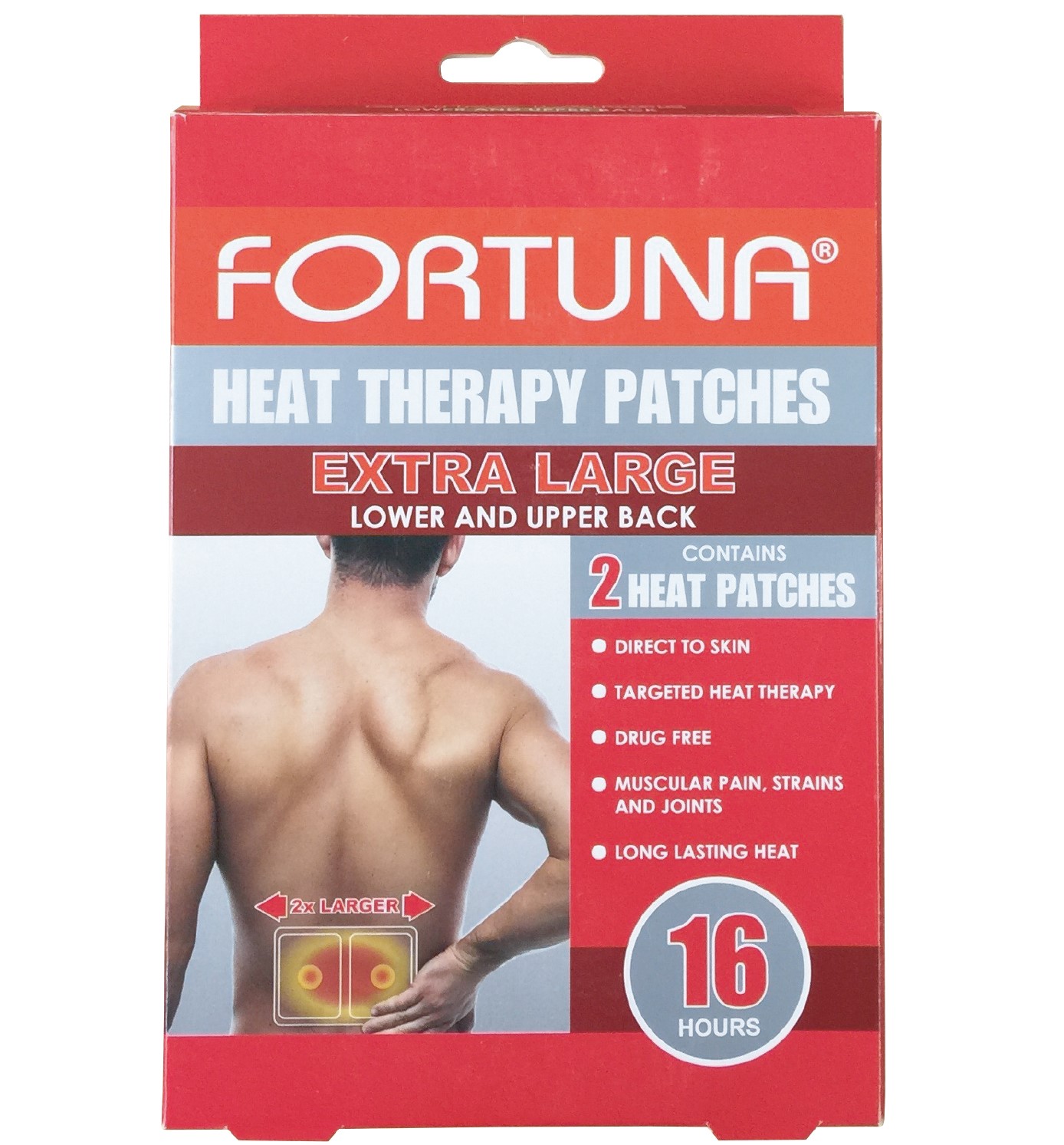
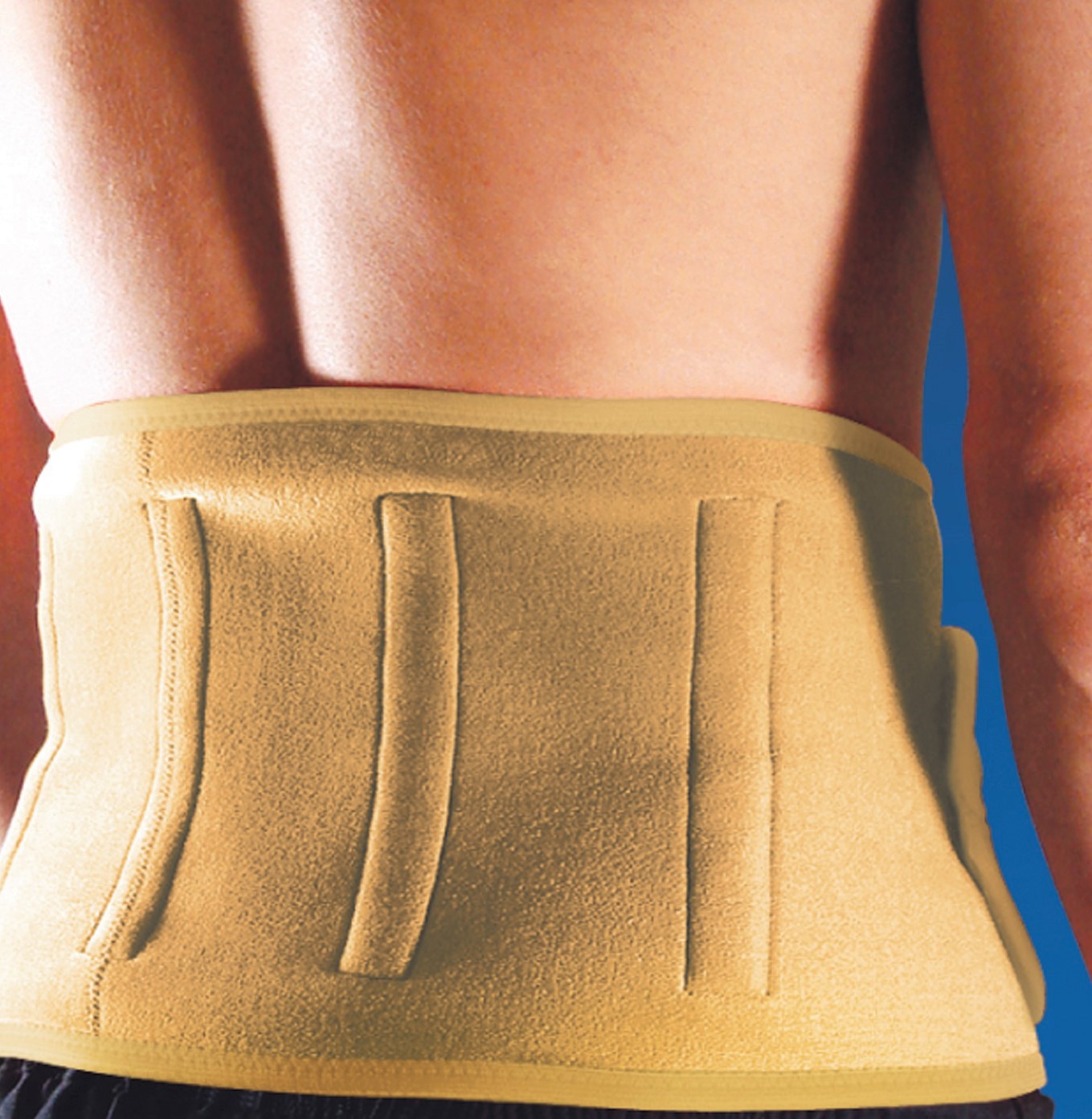
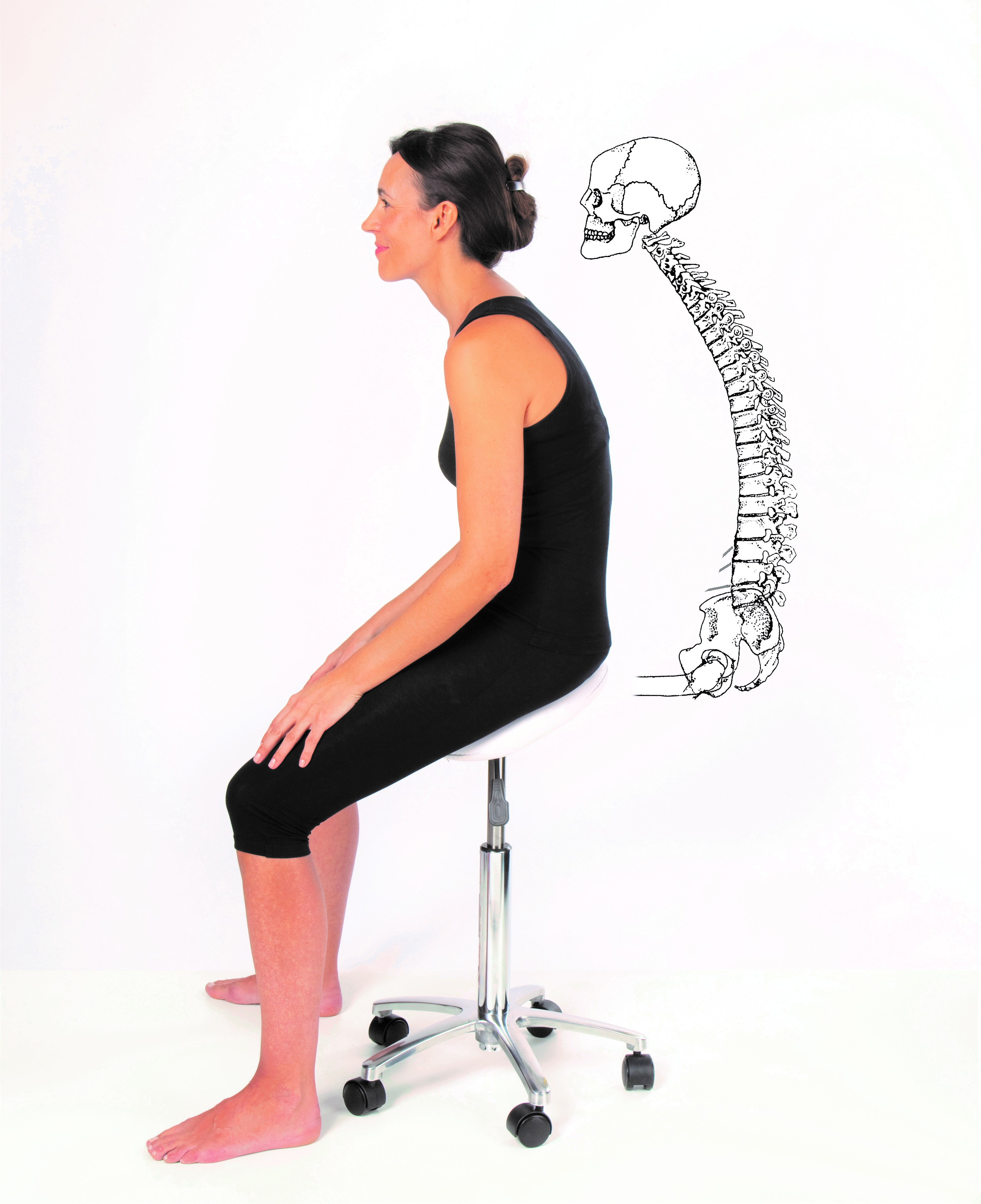
Poor Posture
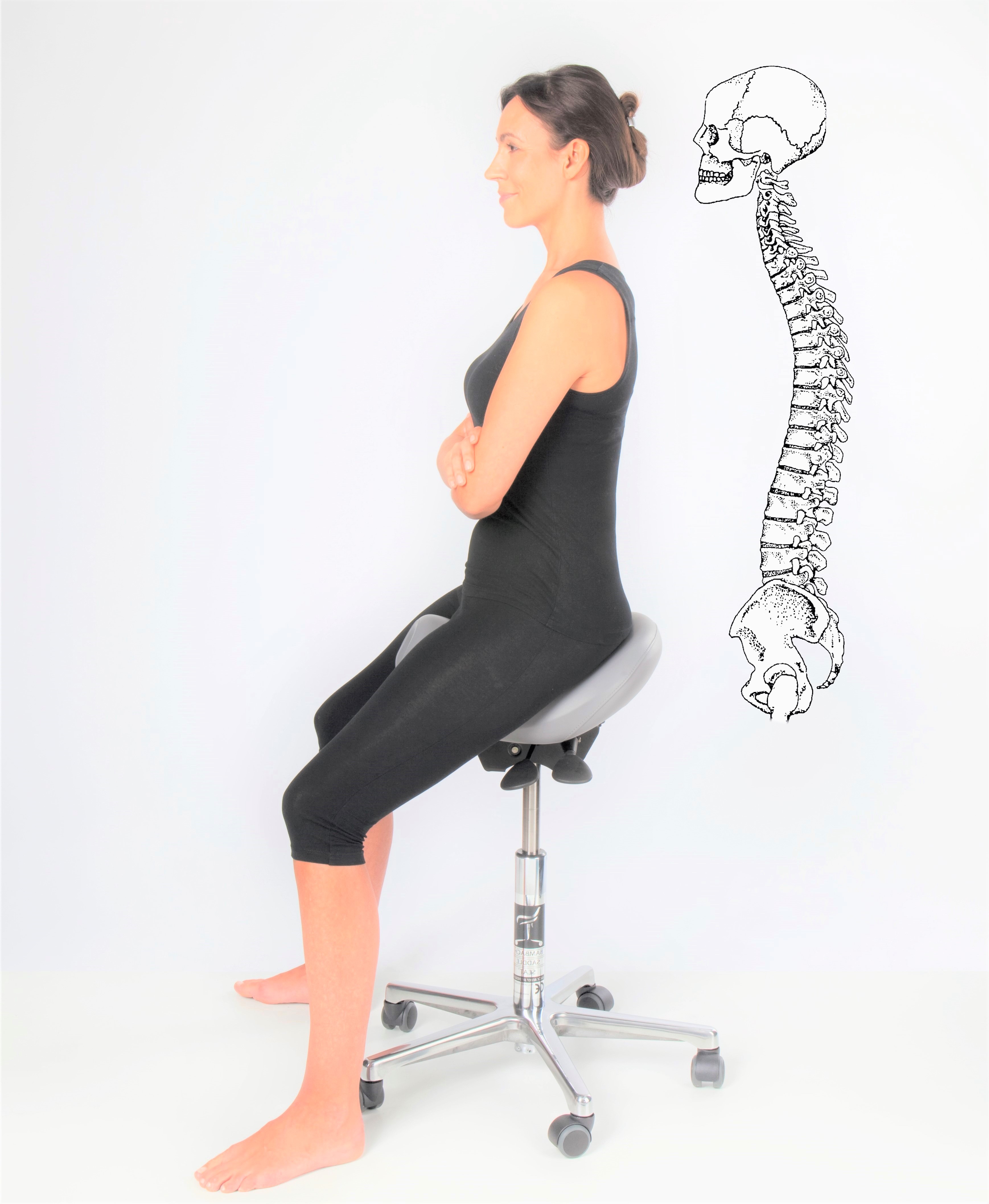
Improved Posture on Bambach
A. If you have a long-term medical condition you do not need to pay VAT on most products that we sell. We can advise you this and help you with the simple paperwork.
A. Unfortunately there is no way to be certain if you’ll be helped by a particular product. Sometime you just have to try it, knowing there is no guarantee that you pain will be reduced. For smaller, less expensive items like heat patches or lumbar supports, this is probably as risk worth taking. However, the Bambach is a much bigger investment and it is possible to have one for a Trial period.
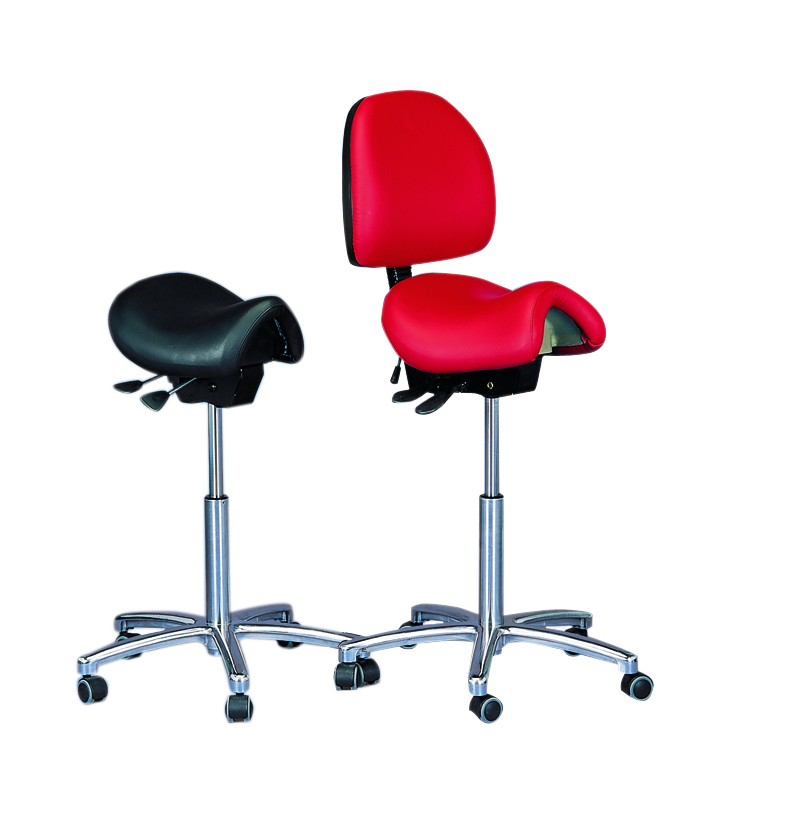
NHS: Conditions - Back Pain - Read more
NHS: Conditions - Sciatica - Read more
British Association of Spine Surgeons - Spinal Stenosis - Read more
Wikipedia: Low Back pain - Read more
Lumbar spinal stenosis: Can positional therapy alleviate pain?
J Fam Pract. 2008 April;57(4):257-260 By Stuart M. Goldman, DPM
Results …… Among 48 patients with neurogenic pain, pain relief was classified as excellent for 22 (46%), good for 11 (23%), moderate for 7 (14.5%), and poor for 8 (16.5%).
Practice recommendations …… Positional therapy with a wheeled walker may help patients with spinal stenosis to walk, as well as ease their pain. This conservative approach has minimum risks—and minimum costs.
www.mdedge.com/familymedicine/article/63096/pain/lumbar-spinal-stenosis-can-positional-therapy-alleviate-pain
We stock a wide range of products, with over 1000 lines available in the showroom.
Come and TRY out the products to see what suits your needs.
Our friendly highly-trained staff will help you make a choice which is right for you.
Copyright © 2025 Fortuna Mobility | All rights reserved.